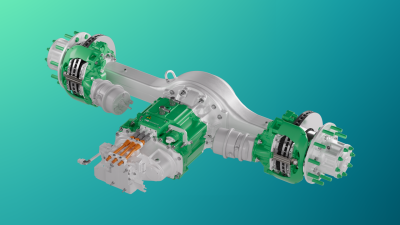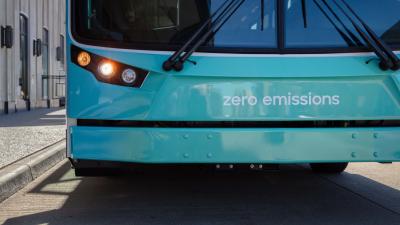Battery Systems
5 facts about LFP chemistry for electric vehicle batteries
The lithium iron phosphate (LFP) battery chemistry is breaking barriers in the electric vehicle (EV) market. It is poised to redefine battery manufacturing and EV sales in North America and Europe. It’s powerful, lightweight, and fast charging...but the LFP is actually nothing new.
1. LFP is a specific type of lithium-ion chemistry.
The resurgence of the LFP chemistry for EVs and its role in the future of e-mobility leads many to beg the question: Which battery chemistry is best for electric vehicles, lithium iron phosphate or lithium-ion?
Because lithium-ion (Li-Ion) batteries are rechargeable batteries that most people are likely familiar with, it seems like the logical selection. They’re used in many everyday items, like mobile phones, laptops and electric vehicles driving on the road today. But when discussing the pros and cons of each EV battery, it isn’t a contest between LFP and Li-Ion batteries.
The Li-Ion battery family contains different battery chemistries named after their cathode; LFP is part of that family. And while an LFP is a Li-Ion battery, not all Li-Ions are LFPs. Other lithium-ion batteries include the nickel manganese cobalt oxide (NMC) battery and the lithium nickel cobalt aluminum oxides (NCA) battery. Both are already utilized heavily in electric vehicles.
2. The “F” in LFP stands for iron.
Fun fact! Batteries are typically named after the chemicals used in the cathode, and an LFP battery uses a cathode material made from the inorganic compound lithium iron phosphate, with the formula LiFePO4. The “F” comes from “Fe,” the periodic table of elements chemical symbol for iron. Fe is derived from the Latin word for iron, ferrum. You may also see an LFP referred to as a lithium ferro phosphate battery.
3. LFPs can be charged to 100%.
Keeping an electric vehicle battery healthy is necessary if your EV wants to live a long, happy life. If your EV has an NMC or NCA battery, one of the easiest ways to do so is NOT charging the battery to 100% every day. This prevents accelerated calendar aging, the natural aging of a battery that will occur whether it is in use or not. Charging an NMC or NCA to 100% puts the batteries in an extreme state of charge. Because batteries turn chemical energy into electricity, a battery is inherently unstable when fully charged. Overall, it is considered best practice to avoid a very high and meager charge, with 80% being the standard battery capacity for an optimal lifetime.
However, LFP batteries are an exception to this charging standard. LFPs have 100% of their capacity available, meaning they can be fully charged without causing accelerated battery degradation. This is thanks to the battery’s cathode.
The phosphorus-oxygen bond in the LFP cathode is stronger than the metal-oxygen bond in other cathode materials. This bond hinders the release of oxygen and requires more energy and a higher on-set temperature for thermal runaway. This makes the battery more stable for being stored at full charge.
4. LFPs are a lower-cost option.
Electric vehicles are popular, and the demand for more companies to switch from internal combustion engines to batteries continues to increase. However, even as demand rises, building an EV still costs more than traditional diesel engines due to battery manufacturing.
Manufacturing NMC and NCA batteries requires nickel and cobalt, two materials that come at a pretty penny to extract. The cost of buying both materials is expensive already. Still, the increasing nickel shortage and cobalt production being stretched to its limits pose a challenge to manufacturing NMC and NCA batteries and making them affordable for integration into EVs.
LFP batteries, on the other hand, currently bypass supply chain issues and inflated prices because nickel and cobalt aren’t needed for the cathode. An LFP’s cathode is made from earth-abundant materials. Lithium iron phosphate is a crystalline compound that belongs to the olivine mineral family. Because the olivine family is a primary component of the Earth’s upper mantle, LFP is more readily available for extraction at a lower cost.
5. 17% of the global EV market is powered by LFPs.
Lithium iron phosphate batteries first came to light in 1996, so it’s not surprising this battery chemistry is already present in the electric vehicle market. Discovered by John Bannister Goodenough’s research group at the University of Texas, LFP batteries gained recognition for their wide range of benefits. Even with advantageous characteristics, LFPs didn’t experience their first large-scale adoption until 10 years later, when they became the industry favorite for electronics.
LFP technology has improved over the years, and it can now be found in a broader range of applications, from motorcycles and solar devices to electric cars. Seventeen percent of the global EV market is already powered by LFPs, but this battery chemistry is poised to make its next big breakthrough with large-scale adoption in different on-highway applications like electric buses and electric trucks. LFPs are less energy-dense, come with lower manufacturing costs and are easier to produce than other Li-Ion and lead-acid battery types.
The warnings of a lithium supply shortage threaten to cut the global EV sales forecast in 2030, but even that hasn’t appeared to slow the momentum of adopting LFP batteries into electric vehicles. LFP battery chemistry remains easier to produce and at a lower cost. Their efficient charging, lower cost of ownership, non-toxicity, long cycle life and excellent safety characteristics make them a crowd favorite for the future of electric transportation.

